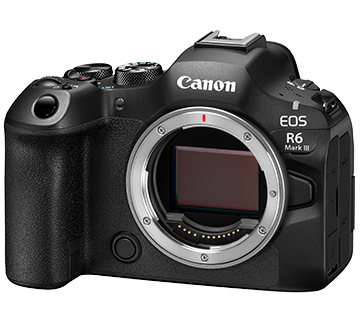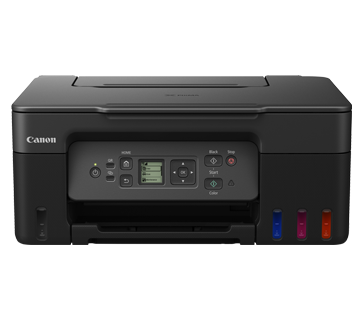Setting Shared Folder (Windows)
Solution
To set the shared folder without access control, follow any of the procedures below for your OS.
To set up a shared folder without access control on Windows Server 2003, you need to set access permissions and then activate a guest user account.
 About access permissions
About access permissionsIf "Access permissions" are granted to users who are registered to computers, they are authorized to operate folders and files.
There are two types of access permissions:
・Network-level access permission
This is to control users who access the shared folder over the network.
・Local-level access permission
This is to control access to folders from users who are logged on to the computer. The local-level access permission can be set only when the drive in which folders are located is formatted in NTFS.
This section describes the procedure for granting full control permission to the "Everyone" account so that any user can access the shared folder.
1. Set a shared folder.
-
1-1. Create a new folder in any drive.
It is recommended to create the folder in a place where users can find it easily, such as the first level in C drive.
Ex) C:\share
NOTE
It is recommended that you write down the folder name you created here.
-
1-2. Right-click the created folder.
1-3. Select [Sharing and Security...] to open the [<Folder name> Properties] dialog box.
1-4. Select [Share this folder].
2. Set the network-level access permission.
-
2-1. In the [Sharing] sheet, click the [Permissions] to open the [Permissions for <Folder Name>].
2-2. In the [Permissions for <Folder name>], under [Group or user names], select [Everyone] to grant. Select the [Full Control] box under [Allow] if not selected.
NOTE
Select the [Full Control] box so that you can store data scanned with this machine to a computer (the file server).
-
2-3. Click [OK] to close the [Permissions for <Folder Name>] dialog box.
2-4. If the [Security] tab is displayed in the [<Folder name> Properties], go to the next step to set the local-level access permission. If not, skip to step 4.
NOTE
The [Security] tab is not displayed when:
- The drive to which the shared folder is set is formatted in FAT16 or FAT32.
- Simple file sharing is enabled.
3. Set the local-level access permission.
If the drive to which the shared folder is set is formatted in NTFS, you need to set the local-level as well as the network-level access permissions.
If the drive to which the shared folder is set is formatted in NTFS, you need to set the local-level as well as the network-level access permissions.
-
3-1. In the [<Folder name> Properties], click the [Security] tab.
3-2. Click [Add...] to open the [Select Users or Groups] dialog box.
3-3. Type "everyone" in [Enter the object names to select].
3-4. Click [Check Names]. Make sure that the correct object name is typed.
NOTE
If the object name is entered incorrectly, you see the [Name Not Found] dialog box. If this happens, click [Cancel] to check whether or not the computer name and user name are incorrect.
-
3-5. Click [OK] to close the [Select Users or Groups] dialog box.
3-6. In the [Security] sheet, under [Group or user names], select [Everyone]. Select the [Full Control] box under [Allow].
NOTE
Select the [Full Control] box so that you can store data scanned with this machine to a computer (the file server).
4. Click [OK] to close the [<Folder name> Properties] dialog box.
5. Activate the Guest user account.
5. Activate the Guest user account.
-
5-1. Right-click the [My Computer] icon on the desktop. Click [Manage] to open the [Computer Management] window.
5-2. Under [System Tools], double-click [Local Users and Groups], and then click the [Users].
5-3. Double-click the [Guest] user.
5-4. Deselect [Account is disabled] to activate the Guest user account.
5-5. Click [OK] to close the [Guest Properties] dialog box.
If you are using Windows XP Professional or Windows XP Home Edition, use simple file sharing to set up the shared folders without access control.
NOTE
If you are using Windows XP Professional and simple file sharing is disabled, follow the procedures below to enable it.
- On the [Start] menu, select [Control Panel], and then select [Folder Options] to open the [Folder Options] dialog box.
- Select the [View] tab.
- Under [Advanced settings], check the [Use simple file sharing (Recommended)] check box.
- Click [OK] to close the [Folder Options] dialog box.
1. Create a new folder in any drive.
It is recommended to create the folder in a place where users can find it easily, such as the first level in C drive.
Ex) C:\share
It is recommended to create the folder in a place where users can find it easily, such as the first level in C drive.
Ex) C:\share
NOTE
It is recommended that you write down the folder name you created here.
2. Right-click the created folder.
3. Select [Sharing and Security...] to open the [<Folder name> Properties] dialog box.
4. Click [If you understand the security risks but want to share files without running the wizard, click here.].
3. Select [Sharing and Security...] to open the [<Folder name> Properties] dialog box.
4. Click [If you understand the security risks but want to share files without running the wizard, click here.].
NOTE
This message is only displayed the first time you open the dialog box. If you are opening the dialog box for the second or subsequent time, skip to step 6.
5. In the [Enable File Sharing] dialog box, check the [Just enable file sharing] check box, and then click [OK].
6. Check the [Share this folder on the network] and [Allow network users to change my files] check boxes.
7. Click [OK] to close the [<Folder name> Properties] dialog box.
6. Check the [Share this folder on the network] and [Allow network users to change my files] check boxes.
7. Click [OK] to close the [<Folder name> Properties] dialog box.
In Windows Vista, you can use the special folder named "Public folder," which allows files to be shared with other users on the same network. Using the Public folder, you can set up a shared folder without access control.
NOTE
By default, the Public folder is created in the [Users] folder, on the drive (e.g. C drive) Windows Vista is installed on.
Example: \Public\share
・Sharing the Public folder
1. On the [Start] menu, select [Control Panel] to open [Control Panel] window.
2. Click [Set up file sharing] to open the [Network and Sharing Center] window.
3. In the [Network and Sharing Center] window, click the downwards arrow next to [Public folder sharing].
4. Check [Turn on sharing so anyone with network access can open, change, and create files], and then click [Apply].
1. On the [Start] menu, select [Control Panel] to open [Control Panel] window.
2. Click [Set up file sharing] to open the [Network and Sharing Center] window.
3. In the [Network and Sharing Center] window, click the downwards arrow next to [Public folder sharing].
4. Check [Turn on sharing so anyone with network access can open, change, and create files], and then click [Apply].
NOTE
- Do not select [Turn on sharing so anyone with network access can open files]. Otherwise, you will not be able to store a document scanned with this machine in a shared folder.
- If the [User Account Control] dialog box appears, click [Continue].
5. Click the downwards arrow next to [Password protected sharing].
6. Check [Turn off password protected sharing], and then click [Apply].
6. Check [Turn off password protected sharing], and then click [Apply].
NOTE
If the [User Account Control] dialog box appears, click [Continue].
・Creating a folder to store a file
You can store a file in the first level of the Public folder. This section describes the procedure for creating a new folder in which to store a file in the Public folder.
1. Display the Public folder in Windows Explorer, etc.
2.Create a new folder in the Public folder.
NOTE
It is recommended that you write down the folder name you created here.
In Windows Server 2008, you can use the special folder named "Public folder," which allows files to be shared with other users on the same network. Using the Public folder, you can set up a shared folder without access control.
NOTE
By default, the Public folder is created in the [Users] folder, on the drive (e.g. C drive) Windows Server 2008 is installed on.
Example: \Public\share
 For Windows Server 2008 users
For Windows Server 2008 users・Sharing the Public folder
1. On the [Start] menu, select [Control Panel] to open [Control Panel] window.
2. Click [Set up file sharing] to open the [Network and Sharing Center] window.
3. In the [Network and Sharing Center] window, click the downwards arrow next to [Public folder sharing].
4.Select [Turn on sharing so anyone with network access can open, change, and create files], and then click [Apply].
NOTE
- Do not select [Turn on sharing so anyone with network access can open files]. Otherwise, you will not be able to store a document scanned with this machine in a shared folder.
- If the [User Account Control] dialog box appears in Windows Server 2008, click [Continue].
5. Click the downwards next to [Password protected sharing].
6. Check [Turn off password protected sharing], and then click [Apply].
6. Check [Turn off password protected sharing], and then click [Apply].
NOTE
If the [User Account Control] dialog box appears in Windows Server 2008, click [Continue].
 For Windows Server 2008 R2 users
For Windows Server 2008 R2 users・Sharing the Public folder
1. On the [Start] menu, select [Control Panel] to open [Control Panel] window.
2. Click [View network status and tasks] to open the [Network and Sharing Center] window.
3. Click [Change advanced sharing settings] in the [Network and Sharing Center] window.
4. In the [Advanced sharing settings] window, under [Public folder sharing], select [Turn on sharing so anyone with network access can read and write files in the Public folders].
5. Under [Password protected sharing], select [Turn off password protected sharing], and then click [Save changes].
・Creating a folder to store a file
You can store a file in the first level of the Public folder. This section describes the procedure for creating a new folder in which to store a file in the Public folder.
1. Display the Public folder in Windows Explorer, etc.
2. Create a new folder in the Public folder.
NOTE
It is recommended that you write down the folder name you created here.
In Windows 7, you can use the special folder named "Public folder," which allows files to be shared with other users on the same network. Using the Public folder, you can set up a shared folder without access control.
NOTE
By default, the Public folder is created in the [Users] folder, on the drive (e.g. C drive) Windows 7 is installed on.
Example: \Public\share
・Sharing the Public folder
1. On the [Start] menu, select [Control Panel] to open [Control Panel] window.
2. Click [View network status and tasks] to open the [Network and Sharing Center] window.
3. In the [Network and Sharing Center] window, click [Change advanced sharing settings] to open the [Advanced sharing settings] dialog box.
4. Check [Turn on sharing so anyone with network access can read and write files in the public folders].
5. Scroll the screen downwards, click [Turn off password protected sharing], and click [Save changes].
・Creating a folder to store a file
You can store a file in the first level of the Public folder. This section describes the procedure for creating a new folder in which to store a file in the Public folder.
1. Display the Public folder in Windows Explorer, etc.
2. reate a new folder in the Public folder.
1. On the [Start] menu, select [Control Panel] to open [Control Panel] window.
2. Click [View network status and tasks] to open the [Network and Sharing Center] window.
3. In the [Network and Sharing Center] window, click [Change advanced sharing settings] to open the [Advanced sharing settings] dialog box.
4. Check [Turn on sharing so anyone with network access can read and write files in the public folders].
5. Scroll the screen downwards, click [Turn off password protected sharing], and click [Save changes].
・Creating a folder to store a file
You can store a file in the first level of the Public folder. This section describes the procedure for creating a new folder in which to store a file in the Public folder.
1. Display the Public folder in Windows Explorer, etc.
2. reate a new folder in the Public folder.
NOTE
It is recommended that you write down the folder name you created here.







